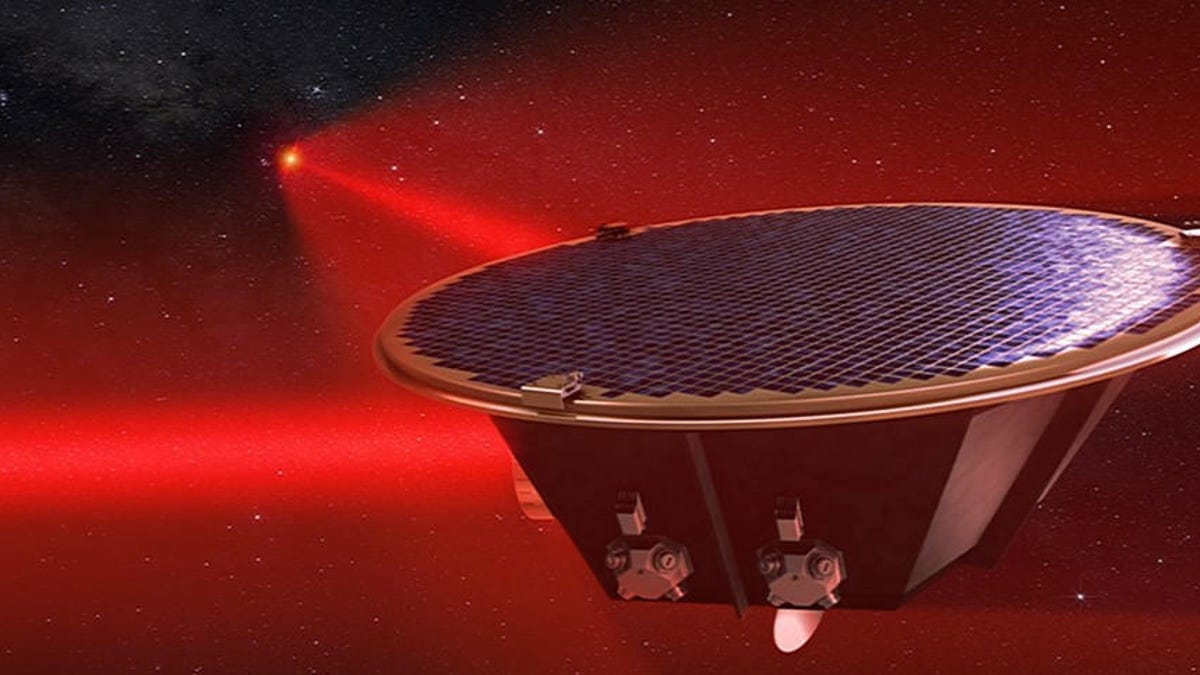Space laser to detect ripples in fabric of the universe
The LISA mission will detect gravitational waves from space with an extremely precise space laser system.

This is what the Laser Interferometer Space Antenna observatory might look like.
Hunting for gravitational waves, faint disturbances in the curvature of space-time, is not easy. Researchers have to wait for extreme cosmic events -- like a black hole collision -- and use ground-based lasers at the LIGO facilities in the US and the Virgo facility in Italy to detect the ripples in space-time they emit. But in the future, a system of space lasers will be established in orbit around the sun, giving astronomers a brand-new, ultra-sensitive pair of eyes.
The new project is a collaboration between the European Space Agency (ESA) and NASA known as the Laser Interferometer Space Antenna. The LISA mission is set to establish three laser-emitting spacecraft arranged in a triangle formation, maintaining a strict distance between each other of a casual 2.5 million kilometers apart. The lasers bounce around and create a signal, or interference pattern, and when a gravitational wave passes through the laser, the pattern changes.
Detect a pattern change? Boom -- you've just detected your first gravitational wave. Congratulations.
The Earth is a particularly noisy place, making it hard to detect the full range of cosmic events that cause gravitational waves. As a result, some of the most common events scientists believe will cause the ripples are invisible to us down here on the ground.
In space, that changes. With LISA we may detect black holes orbiting supermassive black holes and distant events stretching further back through space-time. However, building a space laser system is complicated. It has to withstand the hostile space environment and it has to remain incredibly accurate while it travels, in a triangle formation, around the sun.
Researchers at the Swiss Center for Electronics and Microtechnology have unveiled details of a prototype laser that meets "nearly all of the requirements outlined by ESA and NASA" and is compatible with space. They tested their prototype in a specialized test station and concede that it's not quite perfect -- but they're identifying the problems with their system and thinking about how it could be improved.
Fortunately, there's plenty of time before LISA gets into space.
"While a launch date shortly after 2030 might appear far away, there is still substantial technological development to be performed. The team is ready to further contribute to this exciting endeavor," said Steve Lecomte, a researcher at CSEM, in a press release.
More details about the prototype's performance will be detailed at The Optical Society's 2019 Laser Congress from Sept. 29 to Oct. 3. The words "Laser Congress" are enough to get me excited, so sign me up.

